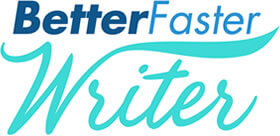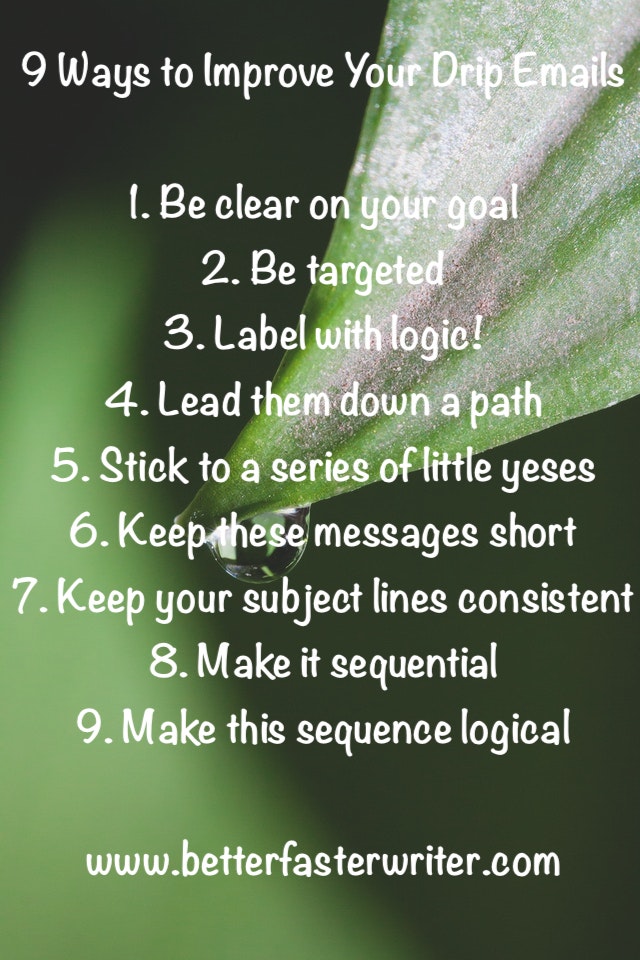Is your business using automated or drip email marketing? If not, why not? You should be, as this ebook explains. And if you are, kudos to you! Now let’s make sure you’re making the most of your drip campaigns with nine tips to improve.
How to approach your automated email marketing
A drip campaign is a series of emails that are triggered by an event, but they aren’t standalone emails. Instead they are a series of emails meant to work together. These might be emails you’d use for a lead nurturing campaign, for example.
Maybe your business offers a whitepaper as a lead generation tool, and then anyone who downloads the whitepaper receives a series of emails that covers more about the topic of the whitepaper or introduces them to other relevant content they might want to download.
Or the drip campaign could be a series of emails someone receives after attending a webinar, each email offering additional relevant content.
Or it can be a post purchase campaign that gives more information. When I bought an orthopedic bed for our very large and aging dog, I received emails that talked about what to expect with the bed, caring for the bed, and other products that were relevant to me as a big dog owner. These were all part of a drip campaign that I received as a customer.
There are many ways to put drip emails to work, so let’s talk about nine ways to do even better drip emails…
 1. Be Clear About Your Goal
1. Be Clear About Your Goal
Be clear on your goal, both for the campaign and for each separate email in the automated drip campaign. Perhaps the goal of the campaign is a meeting scheduled with a sales rep, and downloading assets are the “mini goals” for the standalone messages. What does the end look like, ideally? Work backward from there.
2. Be Targeted
Stay targeted to move this prospect along a path. Know who these people are, how they got into this drip campaign, and what they likely need. Don’t let your emails be about your brand or your company or anything big and generic like that. Stay hyper focused on content you deem to be targeted to this audience based on the action that triggered the email—and all of the research you have done prior to this point, of course.
3. Label with Logic
When you’re setting up your email campaigns, you need to be very careful with labeling in order to avoid confusion later. I know this from experience. A client wanted me to review multiple campaigns they had set up, and it took me hours just to figure out what was what, working with confusing spreadsheets and clicking my way around within the platform. Don’t do that.
Instead, choose a naming system for labeling the emails and stick to it. It must make sense to other people too. If someone can’t look at the label and know exactly where that email fits into the grand scheme, there’s a problem, and you’re setting yourself up for headaches when content needs updating or even deleting.
Be consistent (and picky!) with any assets you might be promoting too. If the name of a whitepaper is Corporate Travel Guide, then use that as part of the label and not some variation on a theme like Latest Business Asset. Also try to avoid anything that makes a label obsolete such as dates.
4. Lead Them Down a Path
When you’re planning your emails, lead the recipients down a path. Think of each email in the series as another signpost or stepping stone that is slowly but surely leading the recipient toward your end goal.
If you have several types of content assets to offer, think through the order in which you want to offer them. I once worked on emails for a company that offered different types of employee insurance to businesses. Early emails were about re-enrollment season and bigger issues and later emails were more specific, such as disability insurance and theft protection. Offering the information in that order made sense.
5. Stick to a Series of Little Yesses
Rather than go for a big ask early on, determine little yeses you can go for instead. By a little yes, I mean a low-risk or risk-free call to action, such as reading a blog post, downloading a guide or watching a short video. The more often the recipient says “yes” to a little ask and likes what they get, the more likely they are to say “yes” to a big ask when it comes.
6. Keep These Messages Short
The emails in your automated drip should be short and to the point, with easy-to-grasp messages and clear offers. If you’re covering more than one topic in an email, you probably need another email.
7. Keep Your Subject Lines Consistent
When you’re sending a series of emails, you’ll begin to develop a familiarity in the inbox when your subject lines are consistent in style. You could even number the emails in the subject lines! This helps to train people to expect and recognize your emails. They don’t have to read the same, but sound and look the same, even in how you choose to capitalize your subject line.
8. Make It Sequential
Rather than crafting several stand-alone email messages, make sure the emails read well in sequence. If you want to save time by re-using content from one automated email campaign in another, that’s okay as long as you tweak the messaging to fit exactly into the sequence you’re dropping it into.
9. Make This Sequence Logical
What is a logical thought pattern for a prospect as they get these emails from you? In what order should your information be presented to make the most sense? For example, let’s say you sell printed wedding supplies like invitations. You could line up the topics of your emails based on when brides typically move on to the next step in the planning process. They probably purchase save-the-date cards first, then invitations, then materials for the reception, like menu cards or giveaways.
Or maybe for a company that sells enterprise software, the first asset is a whitepaper on overcoming challenges, then there’s an email about a cost analysis of solutions, and then a document with content to share with a business decision maker.
One way to ensure this is to reference the previous email. Go ahead and use wording such as, “In our last email to you, we….” If they didn’t open the last email, you’ll be reminding them that you sent one, and you might even make them curious what they missed!
If you’re going to take your automated email marketing to the next level with a drip campaign, these 9 tips should help. To learn more, get this ebook with automated email marketing tips that takes you from the why to the how.


 1. Be Clear About Your Goal
1. Be Clear About Your Goal